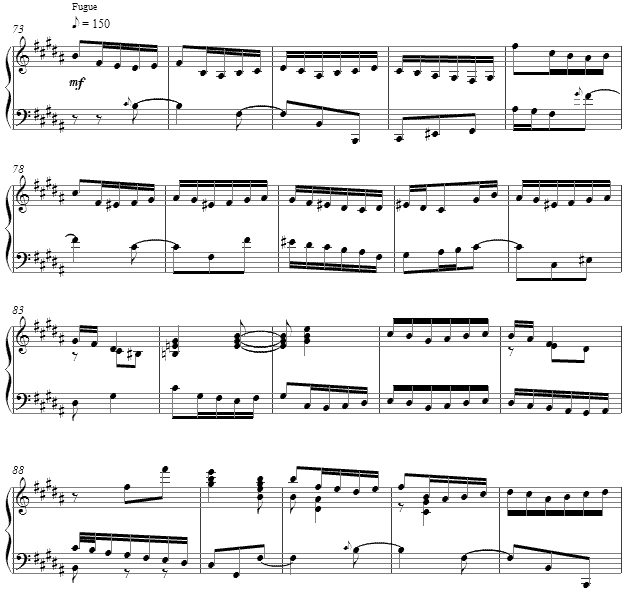Music and Texts of GARY BACHLUND
Vocal Music | Piano | Organ | Chamber Music | Orchestral | Articles and Commentary | Poems and Stories | Miscellany | FAQs
Hommage à Ravel - (1999)
Minuet and Fugue
Among the great melodists of the twentieth century, Maurice Ravel remains for me an inspiration, one among many. Britannica writes of Ravel that he was "for the most part content to work within the established formal and harmonic conventions of his day, still firmly rooted in tonality -- i.e., the organization of music around focal tones." Igor Stravinsky compared Ravel's work to that of "the most perfect of Swiss watchmakers." Such an estimation is indeed a great homage, or hommage.
After a century of generally empty musicological rhetoric "liberating" tones, rhythms, meters and bar lines, it remains to Ravel and fellow tonal composers to remind that one might forge a musical vocabulary indelibly one's own from the same tonal materials as one's tonal forbearers. This seems especially so when one looks back to survey the enormous and quite average opus of atonal and dodecaphonic composers, set theorists and avant-garde enthusiasts who combine to form a morass of rather uninteresting art experiments generally eschewed by the general public. Their proponents today fight a rear guard action to enforce this losing aesthetic stance on students who then escape the strictures of musical academia to forge their own paths into a musical future uncovered day by passing day. In only the last years the redoubtable New York Times music commentators made the seemingly startling discovery that "tonal" music was experiencing a resurgence amongst contemporary classical composers. I suspect, in their earnest enthusiasm over previous decades, they did not see that classical tonal music had not expired according to some historical imperative, but rather was always there to be found -- should one have simply looked.
I chose to make "hommage" -- the French spelling -- to Ravel and his so very personal and individual" understanding of common practice musical principles with this simple minuet and fugue. The performer is urged to employ any and all stylistic understandings and colorations as might seem apt in thinking about the fine works of Ravel to thereby color this piece.
The accompanied fugue subject is related to the opening gesture of the minuet, and continues in "common practice" through to its coda, a short revisit to the minuet theme. The tonal regions visited are dictated by the harmonic structure of the minuet itself.
The score to Hommage à Ravel is available as a free PDF download, though any major commercial performance or recording of the work is prohibited without prior arrangement with the composer. The violin part is attached at the end of the file, as a separate score. Click on the graphic below for this piano score.

